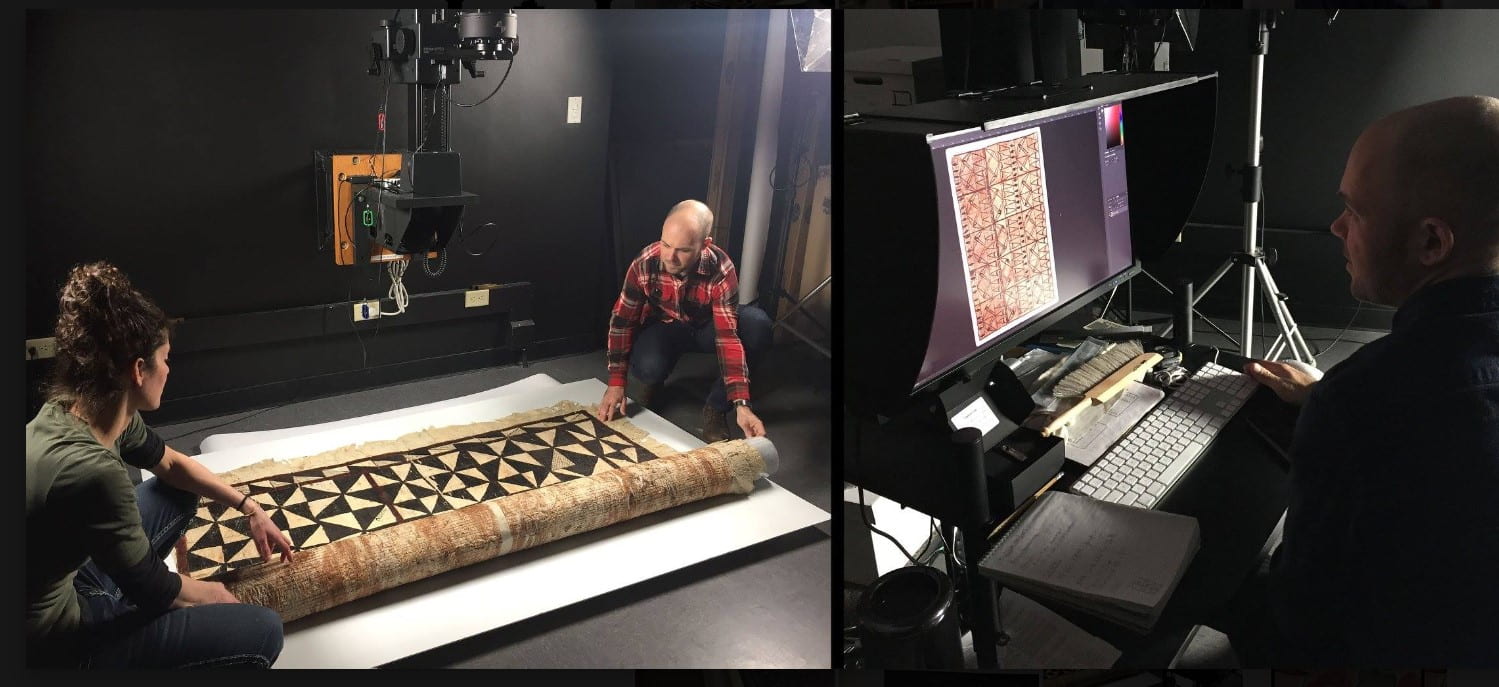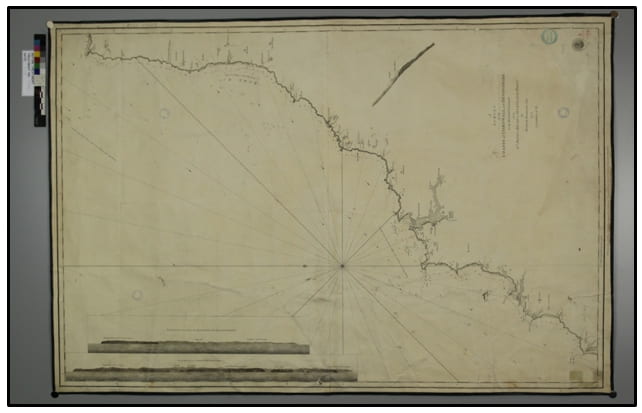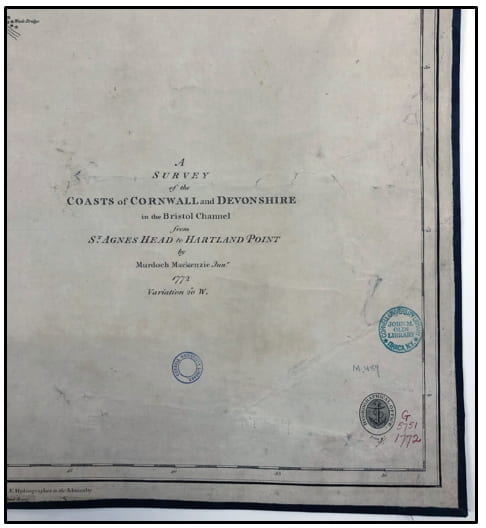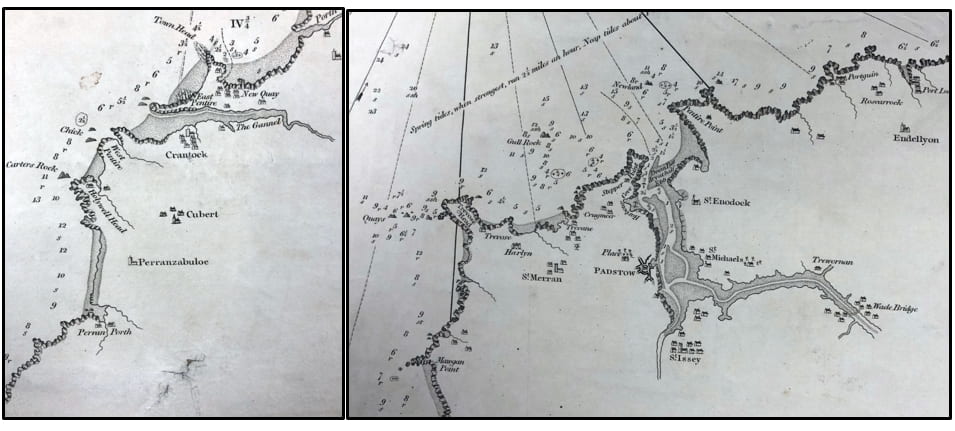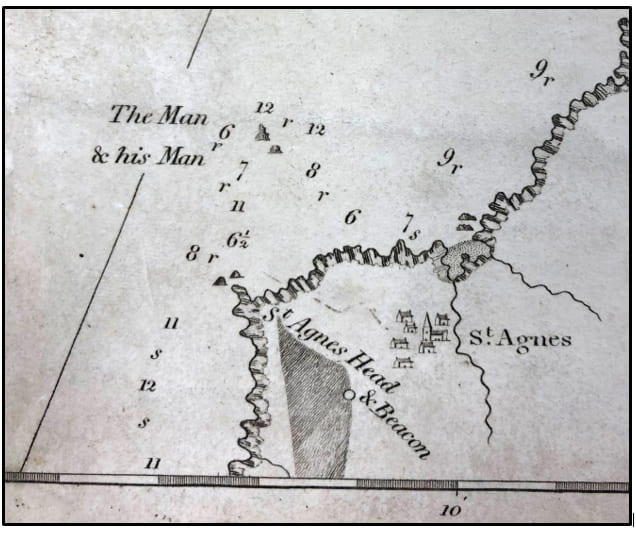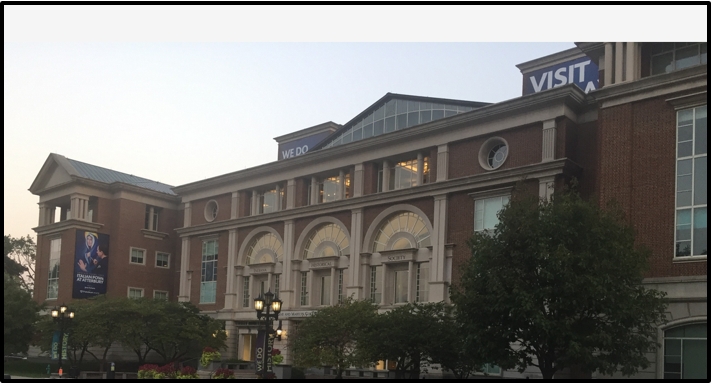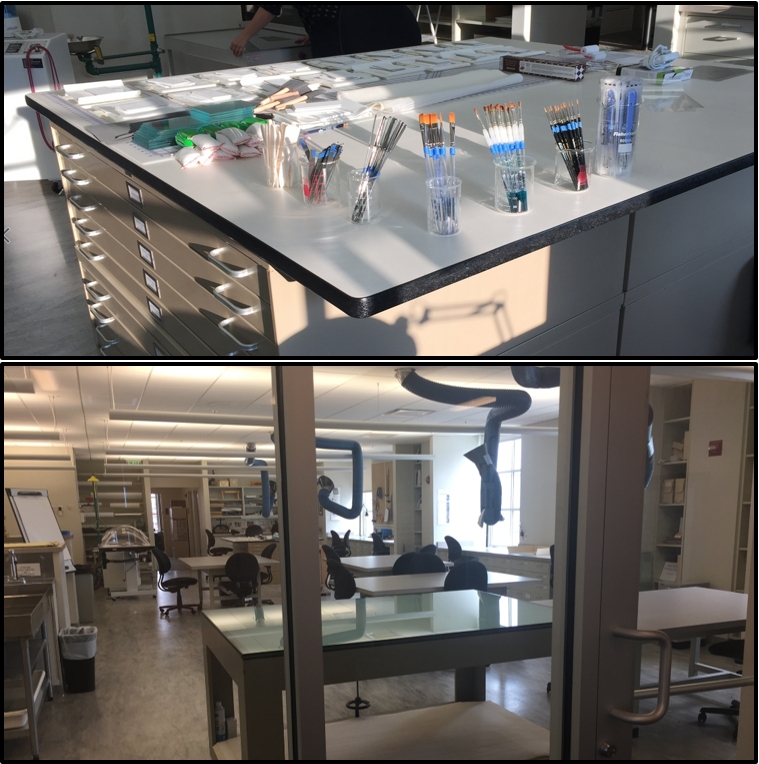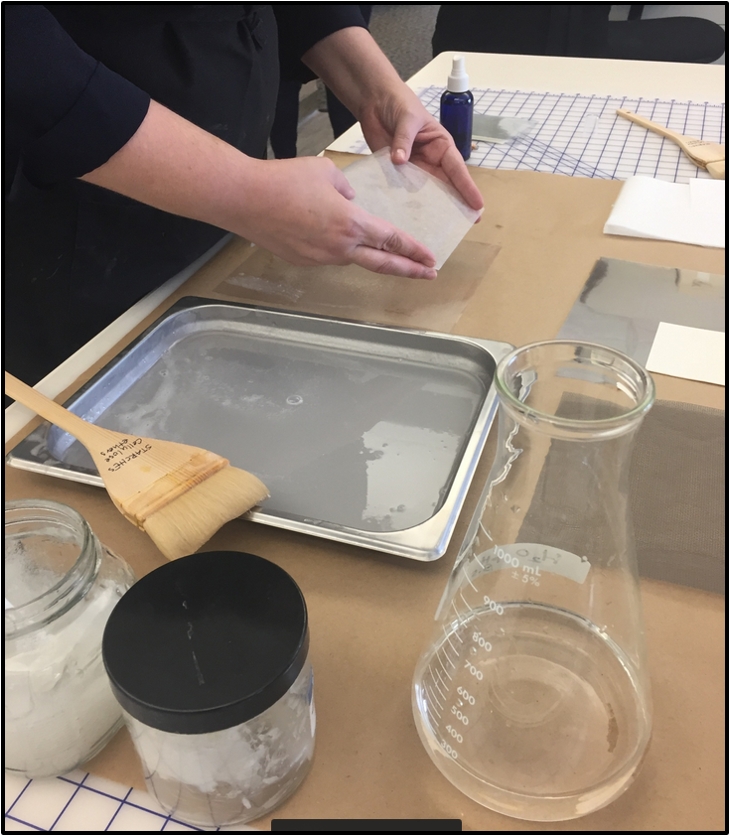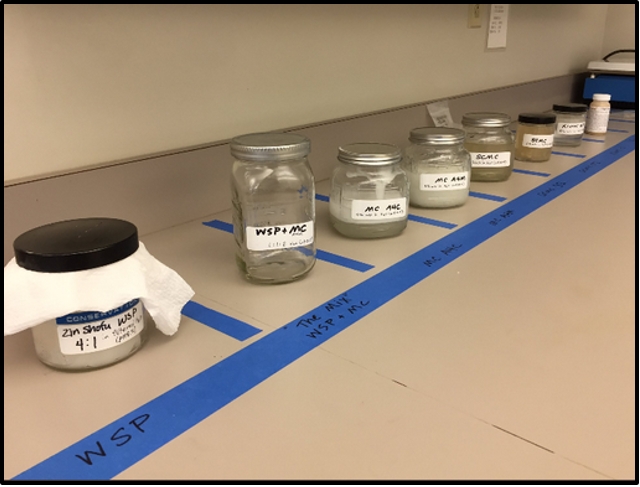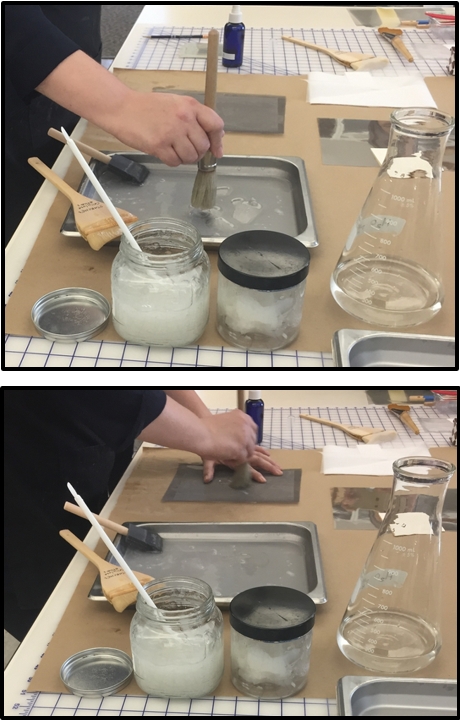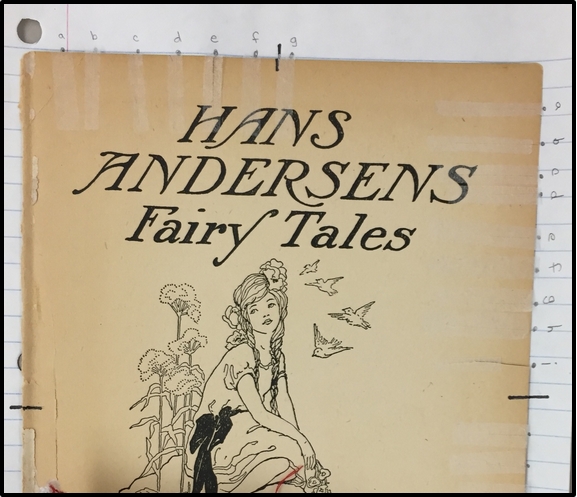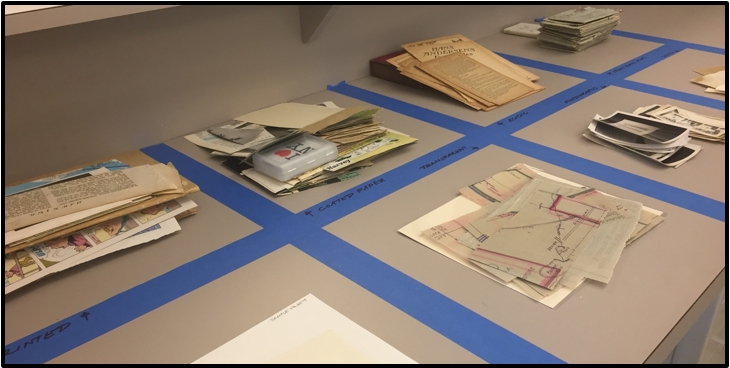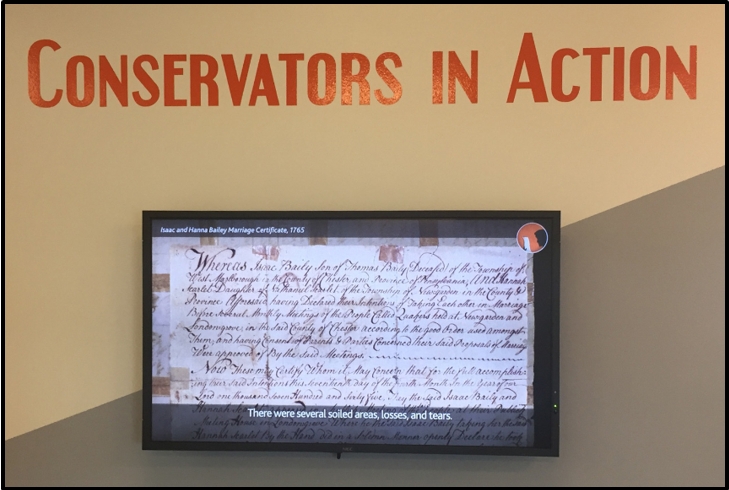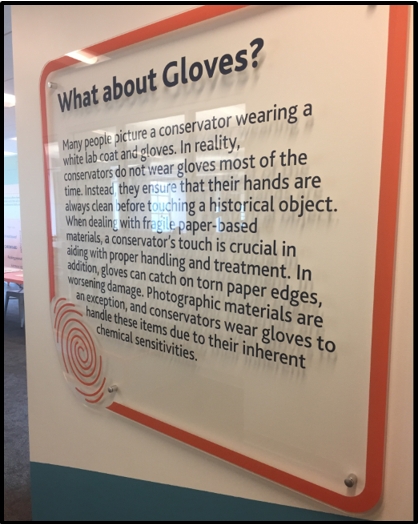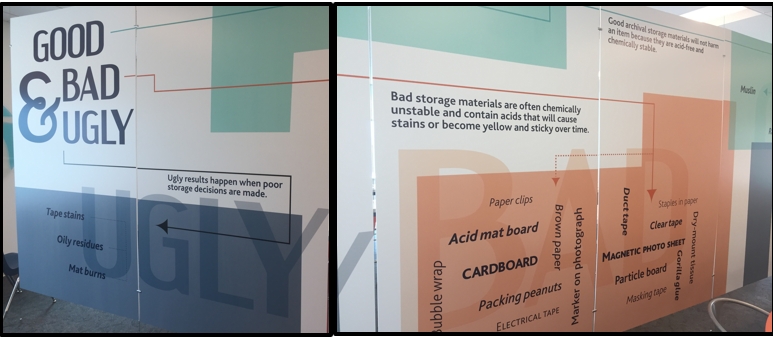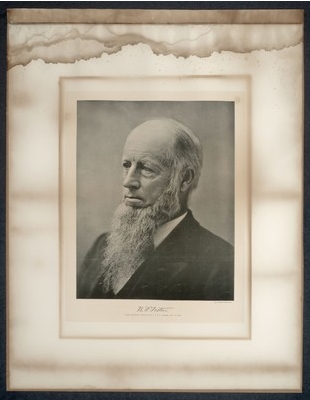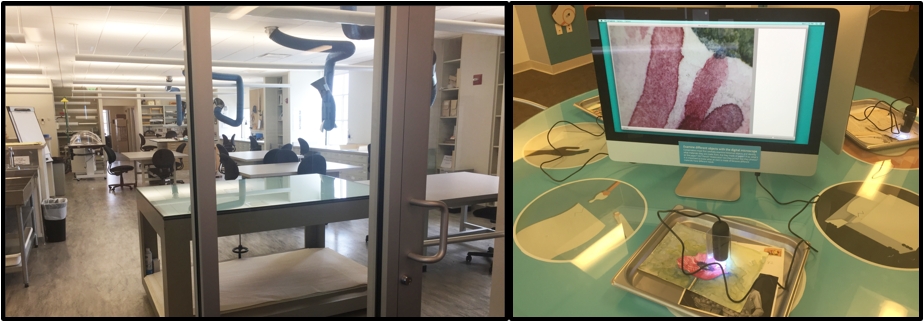News
Over the last year and a half, a major effort was undertaken by the Cornell Library Conservation Lab to clarify roles, responsibilities, and priorities, the result of which has gone into effect over the last 6 months. Beginning in April 2019, the lab has been restructured to reflect changes in staffing, streamline the reporting structure, improve communication and workflows with partners, and focus capacity in priority areas. We would like to share information about this effort, our current staffing, our priorities, and how we are planning for the future to respond to both the traditional and changing needs of CUL’s collections.
In April, Michele Hamill assumed the position of Head Conservator and now oversees lab staff and operations. Her time is divided between supervisory responsibilities, strategic and workflow planning, and as Cornell University Library’s Paper and Photograph Conservator.
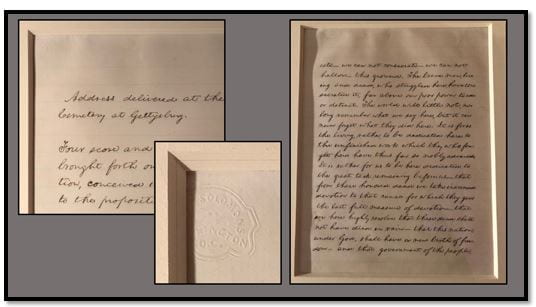
In August, Michele Hamill conducted a research trip to the White House to examine their copy of the Gettysburg Address, seen here, to inform the preservation of CUL’s Gettysburg Address.
Also in April, Michele Brown, Cornell University Library’s Book Conservator of over 20 years, began phased retirement, working half-time until Spring 2021. Her time is being focused on a large, high-priority treatment project that requires a conservator of her experience – the Division of Rare and Manuscript Collections’ Piranesi volumes.
Pat Fox, Assistant Book Conservator, is increasingly working on rare and special collections, while maintaining responsibility for circulating book repair. Caitlin Jochym, Senior Conservation Technician, is now half-time and will be indefinitely. Jill Iacchei, Senior Conservation Technician, is our only staff member working full-time on rare and special collections. The lab hosts 2-3 student employees whose assistance is limited to circulating book repair and basic stabilization of collection materials during academic semesters.
Over the last year, the conservation lab has had a reduction in staff of 1FTE, primarily through personal choice. It is a priority for all of the departments of Digitization and Conservation Services to maintain a healthy work/life balance and that includes life decisions. Currently, the lab is staffed at 3.875 FTE across 5 people, but there is a larger, strategic plan in place to recruit and hire a Conservator for Special Collections over the next year. This new position will fill needs around conservation strategy for bound volumes, work prioritization and facilitation, and further increase our newly focused capacity to properly care for CUL’s collections.
Priorities
With our current level of staffing, we have limited capacity to respond to collection materials (even with notable condition concerns) that are not in our current priority areas. We are no longer staging large amounts of collection materials in the Conservation Lab awaiting treatment and we are only accepting items into the lab for treatment when we can identify that a staff member has the capacity to complete the work in 3 months. This represents quite a shift for some of the collection owners we serve and we realize this. We want to be clear about what we can realistically get done in a responsible amount of time, leaving little to fall into the cracks.
In an analysis of available staffing and the range of services we could offer, we determined that our efforts should focus on the 5 priority areas:
- Exhibitions of rare and special collection materials – assess, treat, and mount collection materials for best presentation and safety.
- Instruction – evaluate where the condition and/or the enclosure interfere with safe use and handling, and needs are immediate or demand is high; provide treatment and/or enclosures as needed.
- Digitization projects – assess for condition concerns, advise on safe handling, and treat as needed.
- New acquisitions and processing needs – provide treatment stabilization and/or enclosures to enable new acquisitions and newly processed collections to be safely shelved and available for research, instruction, and exhibition.
- Other one-time priorities or pressing needs – including special donor or researcher requests, grant projects, or condition concerns requiring rapid response, like water damage or mold.
Strategies
In order to treat as many rare and special collections items as possible with limited staff, we are exploring different treatments and workflows, more stabilization options, and a variety of enclosures. We are now utilizing all lab staff, with the necessary skills and experience, on all collections types, which has increased our ability to respond to priority areas. You may notice differences from past approaches as we continue to develop our strategies. As we continue to explore new approaches, we welcome input as a necessary and valuable part of the decision-making, particularly regarding the nature of the collection material and how it is used and how often.
Along with all of the work detailed above, here are a few things we’re also currently working on:
- Rapid response plan for collections emergencies – This includes automated communications strategies, vendor and insurance preparedness, keeping the current disaster plan up to date, and preparation with the Office of Risk Management. We hope to expand to include a rapid response plan for digital content as well in the future.
- Better facilitation with Library Annex – When routinely consulting on storage strategies across the library, better understanding the needs of our high-density storage is imperative for sharing reliable information for coordinating long-term storage.
- Mellon Foundation Grant: Assessing the Physical Condition of the National Collection – We are one of the 5 participating US libraries in this project led by the Library of Congress to assess the condition of circulating collections. This project is informing an update to CUL’s Brittle Books Program—We are reviewing the decisions and criteria for the brittle book workflow from a conservation perspective and including digitization for preservation and access to a digital format.
- Updating the Conservation job family – This is a result of the recent staffing changes and to incorporate the new position of Conservator for Special Collections.
Please reach out to us at conservation@cornell.edu with questions and comments.
Tre Berney, Director, Digitization and Conservation Services
Michele Hamill, Head Conservator


